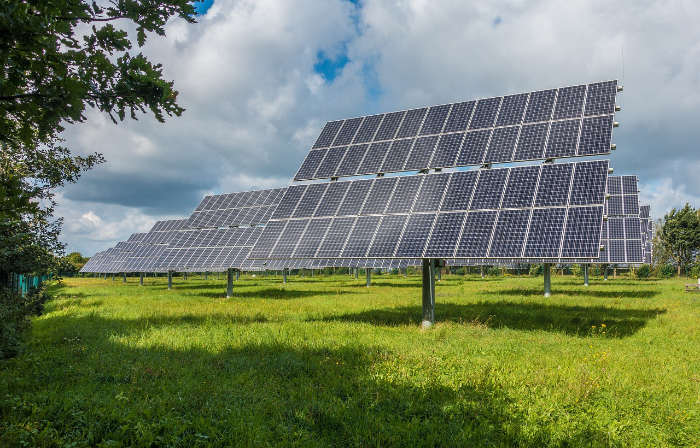Intersex People by Country 2025

Country | Most Known Intersex People↓ | Known For | |
|---|---|---|---|
| Australia | Tony Briffa | Morgan Carpenter | | TB - First known intersex and non-binary mayor and public officeholder | MC - Activists, currently executive director at Intersex Human Rights Australia | |
| South Africa | Sally Gross | Mokgadi Caster Semenya | | SG - Intersex activist, former clergyman, political refugee | MCS - Middle-distance runner who has won three World Championships and two Olympic gold medals in the 800m. | |
| Poland | Piotr Godlewski | Founder of the Intersex Society of Poland | |
| Netherlands | Miriam van der Have | Co-founder of the Dutch Intersex Society | |
| Germany | Markus Bauer | Bauer has been instrumental in raising awareness about intersex rights and challenging harmful practices in Germany | |
| New Zealand | Mani Mitchell | Renowned artist, filmmaker, and dedicated intersex activist | |
| Canada | Koomah | Musician, artist, and activist | |
| Iceland | Kitty Anderson | Co-chair of European intersex organization OII Europe, a co-founder of Intersex Iceland, and chairman of the board of the Icelandic Human Rights Centre | |
| United States | Hida Viloria | Pidgeon Pagonis | Sara Kelly Keenan | River Gallo | | HV - Writer, author, producer, and human rights activist known for the book "Born Both: An Intersex Life" | PP - Activist, artist, and co-founder of the Intersex Justice Project | SKK - Received the first birth certificate marked "intersex" | RG - Salvadoran-American filmmaker, actor, model, and intersex rights activist | |
| Belgium | Hanne Gaby Odiele | Fashion model and intersex rights advocate | |
| Austria | Erik Schinegger | Skier who won the women's downhill ski world championship in 1966, a time during which he was recognized as female and used the name Erika Schinegger | |
| India | Dutee Chand | Dutee Chand is an Indian skilled sprinter who is the current national champion in the women's 100m | |
| Philippines | Daniela “Nella” Castro | Advocate for intersex and LGBTQ+ rights in the Philippines |
- Firm population figures for people with intersex variations are effectively impossible to obtain due to differing definitions of the term intersex, the stigma and misconceptions associated with the condition of being intersex, and lack of accurate recording of data.
- The table above showcases some of the world’s best-known intersex individuals.
Accurate data regarding the number of intersex people in any given country is effectively impossible to attain due to a variety of complications. Admitting one’s intersexuality comes with a significant stigma, misconceptions about intersexuality abound, and the lack of accurate data recording practices is a constant concern. However, the most damaging confounding factor may be the ongoing disagreement over the fundamental definition of the term intersex.
The impact of this disunity is both immediately evident and far-reaching. For example, the best-known estimate of the prevalence of intersex individuals is 1.7% of the total population, drawn from a 2000 study by a team of researchers that included Brown University sexologist Anne Fausto-Sterling. However, Sterling’s study used a very broad definition of intersexuality, which has been criticized by other experts. In a response in the Journal of Sex Research, psychologist Leonard Sax offered a narrower definition of intersexuality, which resulted in an estimated concentration of 0.018% of the population—nearly 100 times less common than Fausto-Sterling’s estimate.
Highlighted Countries
United States
According to Anne Fausto-Sterling’s widely publicized study, nearly two babies (1.7) out of every 100 are born intersex. Children born intersex do not identify as binary male or female. They may have different or mixed genitalia that puts them outside the binary range for classification. If Fausto-Sterling’s estimate is accurate (it is disputed, as previously outlined), the number of intersex births may approach the number of people born with red hair in the United States.
Europe
Compared to other countries and regions, Europe has one of the smallest percentages of the intersex population. With all the countries in Europe, only about 1 out of every 2,000 births are intersex. This statistic means that only 0.05% of the total population can identify as intersex. The low percentage of intersex births may be connected not to genetics, but to reporting: Certain countries within Europe do not allow a non-binary identification at birth.
Australia
Australia is home to a significant intersex population. It is estimated that roughly 1.7 people in every 100 are born with non-binary sexual anatomy. As in many countries, intersex protections and organizations representing the rights of the intersex population are still in the early stages of development.
India
Unfortunately, India lacks an option to identify as intersex. Often referred to as a third sex or the third gender, intersex is not a viable designation in India. It is estimated that intersex births occur with a similar frequency as in other countries (roughly 1.7%). However, recent attempts have been made to recognize intersex babies and give intersex individuals the appropriate rights and protections.
China
China does not use intersex terminology and does not officially track the number of intersex births each year. It is believed that this lack of intersex acknowledgement, combined with China’s “one-child” rule, resulted in many intersex babies being identified as male. Unfortunately, babies born with non-binary identification were often mutilated to conform to one gender or another. Human rights groups focusing on intersex identification and protection have begun to form in the country.
Canada
It is estimated that 0.24% to 0.36% of all births in Canada can be identified as intersex.



















